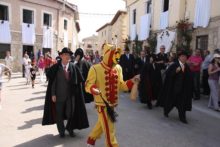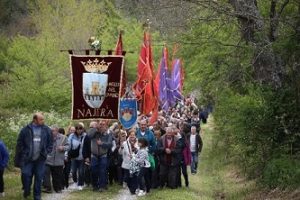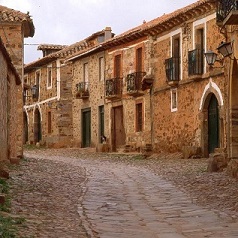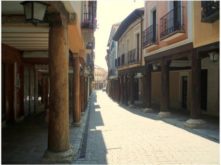By Cristina Escudero, conservator of the General Directorate of Cultural Heritage and Coordinator of the Emergency Unit for Cultural Heritage of the Region Castilla y León (UGRECYL)
I suppose more than one person will be surprised by this question since despite the evolving concept of “cultural heritage” that has considerably broadened particularly in recent decades, the general public still relates to cultural heritage in terms of the material components that form part of it, such as buildings, altarpieces, paintings, tapestries, old documents, and so on.
Starting from this premise, for example, nobody would ever imagine the damned virus penetrating wood, stone or a piece of fabric; that is to say, affecting the constituent materials of the works of historical artistic interest… or could such a nightmare be imaginable?
It is clear that the Coronavirus, by itself, does not have this counterproductive effect, but let us not forget that the pandemic has caused a state of health emergency at global level in which all countries are taking various measures focused, as could not be otherwise, on the top priority at this time: that is people’s lives and safety.
Provisions aimed at saving lives – the first priority -, preventing the spread of the disease to mitigate the pressure and collapse of health systems, meeting the needs of the population or mitigating damage to the economic fabric of which heritage is also a part, even if some are often forgotten – indeed too often.
The pressure this crisis is putting on health systems, civil protection systems, emergency responders, FCSE (Fuerzas y Cuerpos de Seguridad del Estado – translator’s note: Bodies and Institutions in charge of Law enforcement in Spain), members of the military, volunteer groups, companies, workers, self-employed and society in general is enormous and the effort will never be sufficiently appreciated.

In this highly dramatic context in which the focus is on the health crisis and the associated economic crisis, can we ask ourselves what is happening to cultural heritage? I think so, as do all those who realise or feel that heritage is also part of people’s lives, shaped like everyone’s unique fingerprint, fingerprint and DNA in memory of our own societies…
The elements of cultural heritage that have come to us, let us not forget, derive from the wreckage of history, those remains that allow us to read and understand it, the survivors of so many disasters, that which has not been able to destroy either the onslaughts of nature or the restlessness of men, which is the main reason and not alone for which cultural heritage deserves to be looked at with much respect and due consideration.

That is why we must reflect on what is happening with cultural heritage at this time; both tangible and intangible, with our monuments, processions, festivities, churches, museums and traditions in these new and troubled times, times of fear and uncertainty; all of this bearing in mind that as a result of this emergency, containment and fumigation/disinfection measures are being taken, among others, which are indeed affecting cultural heritage and which we had never contemplated before until the outbreak of this deadly pandemic.
We will need to return to the issue of cultural heritage when this happens, recovering, even if forced to wait until next year, so many postponed appointments with our immaterial wealth: pilgrimages along the Ways of Saint James (also known as el Camino de Santiago) and the journey along other historical routes, Carnivals, drumming and cowbell ringing celebrations, “Falles”, fairs and Holy Week events among others; all of these traditional celebrations of a collective nature that this year have been cancelled as we have all sadly become a risk for “the other”.
Turning our eyes to this heritage will help us return to normality, strengthening our commitment as a social group and, therefore, activating an important economic sector for many countries: that is the tourism sector associated with it.
Despite the suspension in time of many collective milestones that we are experiencing today, I confess that this intangible heritage, in general terms, does not worry me; I trust its people and agents, the participants and users who, by living the tradition again, are keeping it alive and in a good state of health, it is deeply rooted in their lives and it is theirs, the same way they have the generosity to share it with the rest of the world to show, in this global era, what makes them different; differences that, far from distancing cultures, establish bridges as has been pointed out so many times.

© Santos Cid
There are other actions, which all countries have taken in relation to the Coronavirus crisis, and which can affect, in a different way, material heritage, which concern the wide range of technicians who work in this field; such as the massive disinfections/fumigations that are being carried out, in the effort to maintain the areas of collective use safe and uncontaminated which, as we see through the internet, are sometimes also applied to our most emblematic symbols, such as monuments, churches or urban sculptures, old acquaintances which we no longer visit so much and which characterize and identify our towns and cities.

Disinfectant solutions and their mode of application are counterproductive for the materials that make up cultural heritage, in the medium and long term they can produce stains, crystallisation of salts that will crumble the surfaces, react with pigments and metals; in short, they will accelerate the ageing of these components and generate other conservation problems that we will have to deal with and devote significant resources to; that is why this is an appeal for prudence, since, if possible and within the possibilities of each situation, they should be avoided and, in case of doubt, the relevant heritage authorities should be consulted.
This crisis, as is continuously reiterated from all sides, will pass, but the elements of cultural heritage that have reached us, those that we were so fortunate to inherit from our ancestors, will remain there, witnesses to all that is happening, and our duty as a society is to ensure that they be preserved in the best possible conditions for a safe passage to those who will come after us.
If this crisis is here to serve any purpose, it is first and foremost a learning experience, so that next time, when there will be another one, either health related or a disaster of some other kind, we should not lag behind as we are doing on this occasion. When dealing with crises or emergencies, the fundamental thing is the coordination of all the different aspects and resources involved in order to carry out an efficient, consistent and shared management, aimed at guaranteeing the health and safety of people and their well-being as a priority, but trying to ensure that no single area is neglected or affected by the actions that must be carried out, among these areas, there is of course cultural heritage.







